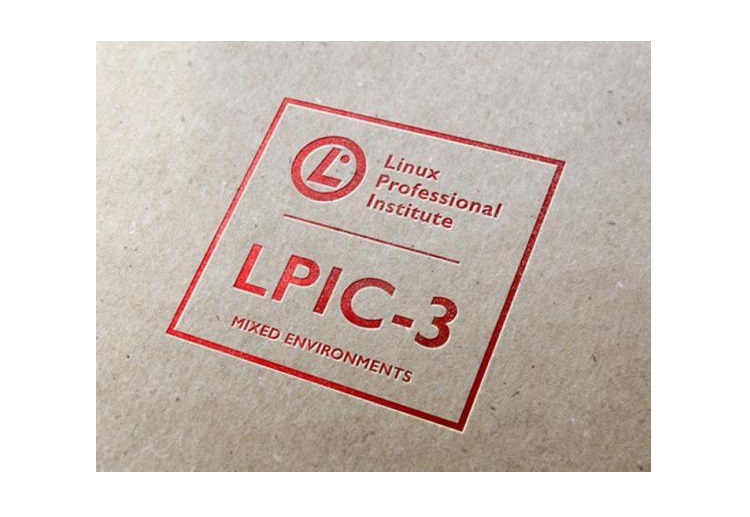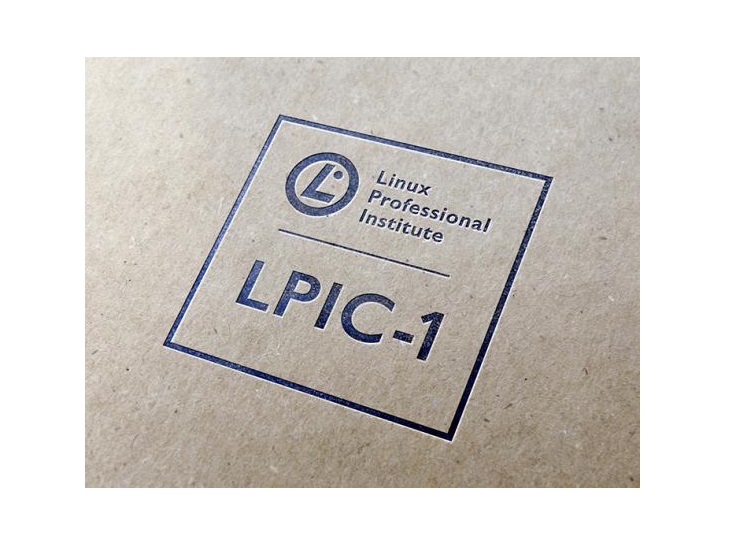Thursday, 30 March 2023
What is LPIC-3 Certification?
Tuesday, 28 March 2023
What is LPIC-2 Certification?
Introduction
Why LPIC-2 Certification is important?
LPIC-2 Exam Details
Benefits of LPIC-2 Certification
LPIC-2 Certification Requirements
LPIC-2 Certification Renewal
Saturday, 25 March 2023
What is LPIC-1 Certification?
Why is LPIC-1 Certification Important?
Eligibility Requirements for LPIC-1 Certification
Exam Details for LPIC-1 Certification
Preparation Tips for LPIC-1 Certification
Career Opportunities for LPIC-1 Certified Professionals
Thursday, 23 March 2023
LPI BSD Specialist
Introduction
The Linux Professional Institute (LPI) certification program has been recognized worldwide as the premier Linux certification. It is designed to provide a vendor-neutral standard for measuring Linux knowledge and skills. However, LPI has now introduced a new certification program for BSD specialists. In this article, we will discuss the Linux Professional Institute BSD Specialist certification, its benefits, and what it takes to become one.
What is the Linux Professional Institute BSD Specialist Certification?
The LPI BSD Specialist certification is a vendor-neutral certification that validates the knowledge and skills of IT professionals who work with BSD operating systems. This certification covers all aspects of BSD systems, including installation, configuration, maintenance, and troubleshooting.
Why Get Certified?
Getting certified as an LPI BSD Specialist can offer several benefits to IT professionals, including:
Better Job Opportunities
The LPI BSD Specialist certification is recognized globally, and it can open up new job opportunities for IT professionals. Employers look for certified professionals who can help maintain their BSD systems, and having an LPI BSD Specialist certification can make a candidate stand out from the rest.
Better Pay
Certified professionals usually earn more than their non-certified counterparts. This is because employers value certified professionals who can help maintain their systems better, and they are willing to pay a premium for their skills.
Enhanced Knowledge and Skills
Preparing for the LPI BSD Specialist certification exam can help IT professionals gain a deeper understanding of BSD systems. This certification covers all aspects of BSD systems, including installation, configuration, maintenance, and troubleshooting. This knowledge can help IT professionals become better at their jobs and take on more significant roles in their organizations.
Exam Details
To become an LPI BSD Specialist, you need to pass two exams: LPIC-1 and BSD Specialist. The LPIC-1 exam covers Linux essentials and basic administration skills. The BSD Specialist exam covers BSD installation and maintenance, network configuration, security, and troubleshooting. Both exams consist of multiple-choice and fill-in-the-blank questions and have a duration of 90 minutes each.
Exam Preparation
To prepare for the LPI BSD Specialist certification exam, IT professionals can take advantage of various resources. These include:
LPI BSD Specialist Certification Study Guide
LPI offers an official study guide for the BSD Specialist certification. This guide covers all the topics included in the exam, and it includes sample questions and answers.
Training Courses
LPI also offers training courses for the BSD Specialist certification exam. These courses cover all aspects of BSD systems, including installation, configuration, maintenance, and troubleshooting.
Practice Exams
Practice exams can help IT professionals gauge their readiness for the actual certification exam. LPI offers practice exams for the BSD Specialist certification, and there are also several third-party practice exams available online.
Conclusion
The LPI BSD Specialist certification is a valuable credential for IT professionals who work with BSD operating systems. It can help them improve their knowledge and skills, open up new job opportunities, and earn better pay. By passing the LPIC-1 and BSD Specialist exams, IT professionals can become certified as LPI BSD Specialists and demonstrate their expertise in BSD systems.
Tuesday, 21 March 2023
A Tech Trainer Discovers the Security Essentials Certification
Thursday, 16 March 2023
Linux Professional Institute LPIC-3 Virtualization and Containerization
In today's fast-paced world, where organizations are adopting agile and DevOps methodologies to develop and deploy applications, virtualization and containerization technologies have become essential for managing and deploying applications efficiently. The Linux Professional Institute (LPI) offers a certification program called LPIC-3, which includes a specialization in virtualization and containerization technologies. This certification is designed for professionals who want to demonstrate their expertise in these technologies and advance their careers in the IT industry.
What is the LPIC-3 certification?
The LPIC-3 certification is a professional-level certification program offered by the Linux Professional Institute. It is designed to validate the advanced-level Linux administration skills of IT professionals. This certification program consists of three specialty exams, and one of them is the Virtualization and Containerization specialty.
LPIC-3 Virtualization and Containerization specialty exam
The LPIC-3 Virtualization and Containerization specialty exam is designed to test the skills and knowledge of IT professionals in managing and deploying virtualized and containerized applications using Linux technologies. The exam covers the following topics:
1. Virtualization
The Virtualization section of the exam covers the following topics:
◉ Designing, implementing, and managing KVM virtualization
◉ Configuring, managing, and deploying Xen virtualization
◉ Managing and deploying other virtualization technologies such as QEMU, VirtualBox, and VMware
2. Containerization
The Containerization section of the exam covers the following topics:
◉ Designing, implementing, and managing Docker containers
◉ Configuring and deploying container orchestration technologies such as Kubernetes and Mesos
◉ Managing and deploying other containerization technologies such as LXC and rkt
3. Advanced Virtualization and Containerization
The Advanced Virtualization and Containerization section of the exam covers the following topics:
◉ Designing, implementing, and managing virtualized and containerized networks
◉ Configuring and managing storage for virtualized and containerized applications
◉ Implementing and managing high-availability and disaster recovery solutions for virtualized and containerized applications
Why should you get LPIC-3 Virtualization and Containerization certification?
The LPIC-3 Virtualization and Containerization certification is designed for IT professionals who want to demonstrate their advanced-level skills and knowledge in managing and deploying virtualized and containerized applications using Linux technologies. This certification is recognized globally and is highly valued by employers in the IT industry. Here are some reasons why you should get LPIC-3 Virtualization and Containerization certification:
◉ Career advancement: The LPIC-3 Virtualization and Containerization certification demonstrates that you have advanced-level skills and knowledge in managing and deploying virtualized and containerized applications using Linux technologies, which can help you advance your career in the IT industry.
◉ Salary increment: According to a survey conducted by Global Knowledge, professionals who have LPIC-3 certification earn an average of $111,890 per year, which is higher than the average salary for IT professionals without certification.
◉ Global recognition: The LPIC-3 certification is recognized globally and is highly valued by employers in the IT industry. This certification can help you get a job in any part of the world where Linux technologies are used.
How to prepare for LPIC-3 Virtualization and Containerization exam?
To prepare for the LPIC-3 Virtualization and Containerization exam, you need to have a strong understanding of Linux technologies and virtualization and containerization concepts. Here are some tips for preparing for the exam:
◉ Review the LPIC-3 Virtualization and Containerization Exam Objectives: The exam objectives provide a detailed outline of the topics covered in the exam. Make sure you review them thoroughly.
◉ Study Linux virtualization and containerization technologies: Study the technologies covered in the exam, such as KVM, Xen, Docker, Kubernetes, Mesos, LXC, and rkt. Understand how they work and how to configure and manage them.
◉ Practice: Practice is essential for passing the exam. Use virtualization and containerization technologies on a Linux system to get hands-on experience.
◉ Take practice tests: Taking practice tests can help you identify your weaknesses and areas that need improvement. Many websites offer practice tests for LPIC-3 exams.
◉ Enroll in training courses: There are many online and in-person training courses available for LPIC-3 certification. These courses can help you prepare for the exam by providing structured learning and hands-on practice.
Conclusion
The LPIC-3 Virtualization and Containerization certification is an excellent way to demonstrate your expertise in managing and deploying virtualized and containerized applications using Linux technologies. This certification is recognized globally and is highly valued by employers in the IT industry. By getting this certification, you can advance your career and increase your earning potential.
Read More: 305-300: LPIC-3 Virtualization and Containerization
Tuesday, 14 March 2023
Stepping up to your personal security role
Saturday, 11 March 2023
Open source myth: That it has a higher total cost of ownership (TCO)
Thursday, 9 March 2023
LPI Security Essentials Certification?
LPI Security Essentials Certification
Benefits of LPI Security Essentials Certification
Exam details
Study resources
Conclusion
Tuesday, 7 March 2023
Why Seek an LPI Security Essentials Certification?
Saturday, 4 March 2023
Community Event Creates a Vision for Empowerment
The Importance of Offering a Career Path
Opportunities for Reaching Out to Youth
Thursday, 2 March 2023
Open source myth: That intruders can more easily find flaws
Read More: LPI Certification















